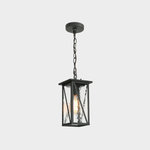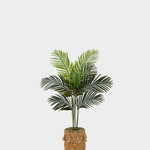What to Plant for Autumn Color in Mild-Winter Gardens
Turn to deciduous plants native to mild-winter woodlands, such as oakleaf hydrangea, that reliably change color with only a touch of winter chill. Or look to warm-winter evergreens with leaves in a fall color palette. To get the best autumn show in your own backyard, here are our top choices for trees and shrubs that need only a little chill for their leaves to change color.
Oakleaf Hydrangea(Hydrangea quercifolia)Native to woodlands of the southeastern United States, oakleaf hydrangea cultivars also grow well in West Coast gardens. They are particularly effective planted in groups of three or five, along split-rail fences, or massed under trees. Summer flowers bloom white and, if left unpicked, often age to be tipped with burgundy by fall. The large oaklike foliage adds textural interest to garden beds, and it changes from green to red as temperatures drop.Where it will grow: Hardy to minus 15 degrees Fahrenheit, or minus 26.1 degrees Celsius (zones 5 to 9)Water requirement: Moderate to highLight requirement: Sun or shade; more sun is recommended in northern zones, while afternoon shade is ideal in southern zonesSee how to grow oakleaf hydrangea
Toyon(Heteromeles arbutifolia)The distinctive red berries of toyon are native to California’s coastal oak woodland and chaparral. Evergreen toyon grows 6 to 10 feet tall and wide, and is well-adapted to dry California summers, needing only occasional water once established. In the garden, plant it as a screen, specimen plant or in combination with other California natives like manzanita (Arctostaphylos spp.) and California wild lilac (Ceanothus spp.). In fall, the shrub is covered in bright clusters of berries, which provide a food source for native birds. Where it will grow: Hardy to 5 degrees Fahrenheit, or minus 15 degrees Celsius (zones 7 to 10)Water requirement: Moderate; low once establishedLight requirement: Full sunSee how to grow toyon
Chinese Pistache(Pistacia chinensis)In mild-climate gardens, Chinese pistache really steals the show in midautumn with its luminous red, orange and gold leaves. Trees can grow up to 25 to 35 feet tall and wide, with a good-size canopy providing shade over a courtyard or lawn. If planted in pairs or small groves, there’s a chance that a male tree will pollinate nearby female trees. The resulting berries can be messy but add additional interest to the tree as they turn from dusty blue to red by the end of October.Caution: Chinese pistache is considered an invasive plant in parts of Texas and elsewhere. Check with your local native plant society before planting. Where it will grow: Hardy to minus 5 degrees Fahrenheit, or minus 20.6 degrees Celsius (zones 6 to 9)Water requirement: ModerateLight requirement: Full sunSee how to grow Chinese pistache
Ginkgo(Ginkgo biloba)Fossil records indicate that ginkgoes are some of the oldest trees on the planet, with little difference in form between the trees we see today and what would have grown in the Mesozoic Era. Today gingkoes are prized as garden trees for their fan-shaped leaves and brilliant fall foliage. By late autumn, the leaves will have all turned from green to deep gold, creating a stunning specimen in the landscape. Trees grow 35 to 50 feet high with branches extending from 20 to 40 feet wide. To check growth in a small garden, ginkgoes can be pruned to stay as smaller trees or trained over an arbor. If you’re planting a new tree, choose a male cultivar, such as ‘Autumn Gold’ or ‘Saratoga’, since female trees can produce messy fruit.Where it will grow: Hardy to minus 15 degrees Fahrenheit, or minus 26.1 degrees Celsius (zones 5 to 9)Water requirement: ModerateLight requirement: Full sunSee how to grow ginkgo
Crape Myrtle(Lagerstroemia indica)These small garden trees grow only to 15 to 20 feet tall and wide. They provide year-round interest with attractive foliage; pretty white, pink, magenta or lavender blooms in summer; leaf color in fall; and smooth, mottled bark in winter. Plant crape myrtle as a single specimen tree in a courtyard or as a pair on either side of the front walkway. For particularly showy orange and red leaves in fall, look for ‘Centennial Spirit’, ‘Acoma’ and ‘Hopi’ (the latter two are hybrids of L. indica and L. fauriei). Most cultivars named after Native American tribes have been bred to resist mildew, which can be a problem with others.Where it will grow: Hardy to minus 5 degrees Fahrenheit, or minus 20.6 degrees Celsius (zones 6 to 9)Water requirement: Moderate; low once establishedLight requirement: Full sunSee how to grow crape myrtle
Japanese Maple (Acer palmatum)Japanese maples are prized by gardeners for their delicate, lacy foliage and graceful branch structure. For a dramatic fall show, choose varieties that turn bright red in autumn, such as Acer palmatum ‘Osakazuki’, or varieties with deep purple foliage from spring until fall, such as A. palmatum var. atropurpureum ‘Burgundy Lace’. If you’re looking for a new tree with good fall color, it’s best to select your tree this season, as some Japanese maple varieties will emerge with red leaves in spring that change to green in summer and fall.
For Northern California gardeners: Wildwood Nursery in Kenwood carries an unrivaled selection of unusual Japanese maples, as well as dogwoods, ginkgoes and conifers. Plus the trip through Sonoma Valley during harvest season is well worth it.Where it will grow: Hardy to minus 15 degrees Fahrenheit, or minus 26.1 degrees Celsius (zones 5 to 8)Water requirement: Moderate; frequent in extreme heatLight requirement: Full sun to partial shadeSee how to grow Japanese maple
Sweetgum(Liquidambar styraciflua)Commonly planted as street trees on the West Coast, sweetgums are native to the Southeast and East Coast of the United States. They are relatively fast-growing trees, reaching 40 to 50 feet tall and about 25 to 30 feet wide at maturity to form a pyramidal shape. In fall, leaves change from medium green to copper, orange, plum and bright red — sometimes with a tapestry of colors on a single tree. Since the prickly, golf ball-size seed structures can be a nuisance, look for seedless varieties, such as Liquidambar styraciflua ‘Ward’.Where it will grow: Hardy to minus 15 degrees Fahrenheit, or minus 26.1 degrees Celsius (zones 5 to 9)Water requirement: Moderate; occasional once establishedLight requirement: Full sun
Mirror Plant(Coprosma repens cvs.)The plant’s common name comes from the small, glossy ovate leaves, which reflect light like tiny mirrors. Many varieties are bred for outstanding leaf colors, such as red-gold Coprosma ‘Tequila Sunrise’ (pictured), and green, amber and red C. ‘Evening Glow’. Plants can reach up to 5 feet tall but are easily kept small with pruning and can be used to edge borders or as accents in containers. Caution: In some areas of Southern California and in parts of Australia and Tasmania, C. repens can be considered invasive due to birds dispersing the viable seeds. Check with your local native plant society before planting. Where it will grow: Hardy to 25 degrees Fahrenheit, or minus 3.9 degrees Celsius (zones 9 to 10)Water requirement: Moderate; low once establishedLight requirement: Partial sun to full sun
Japanese Persimmon (Diospyros kaki)Growing up to 30 feet tall and 15 to 30 feet wide (depending on variety), a persimmon is a good garden-size tree. The leathery, oval-shaped leaves and fruits change from green to medium orange by midautumn. Once the leaves drop, the orange fruit remains on the bare branches like decorative baubles.
Persimmon fruit is plentiful and deliciously sweet, and can be eaten out of hand or added to baked goods. Pick the flat-bottomed Diospyros kaki ‘Fuyu’ variety when fruits are a rich orange and the texture is still firm. For D. kaki ‘Hachiya’, wait to eat until fruits are pudding-like and completely soft. You can leave them to reach this state on the tree (although you’ll be sharing your crop with birds and squirrels) or harvest when fruits are firm, allowing them to ripen on your kitchen counter.Where it will grow: Hardy to 15 degrees Fahrenheit, or minus 9.4 degrees Celsius (zones 8 to 10)Water requirement: ModerateLight requirement: Full sunYour turn: What have you planted for fall color in your garden? Upload your best photos in the Comments!More Celebrate the Season With Colorful Visions of FallWhy Fall Is the Best Time for Planting






Cotinus coggygria ‘Old Fashioned’Smoke Bush(Cotinus coggygria cvs.)The semitranslucent leaves of all smoke bush varieties look beautiful when backlit with late autumn light. Cultivars come in hues from deep purple (Cotinus coggygria ‘Royal Purple’) to brilliant red (C. coggygria ‘Old Fashioned’) to gold (C. coggygria ‘Ancot’). All varieties grow to about 8 feet tall and 6 feet wide, but some can reach heights of 10 to 15 feet. Plant purple varieties close to bright ginkgo or sweetgum trees for excellent foliage contrast.Where it will grow: Hardy to minus 15 degrees Fahrenheit, or minus 26.1 degrees Celsius (USDA zones 5 to 10; find your zone)Water requirement: ModerateLight requirement: Full sun to partial shadeSee how to grow ‘Old Fashioned’ smoke bush
Q